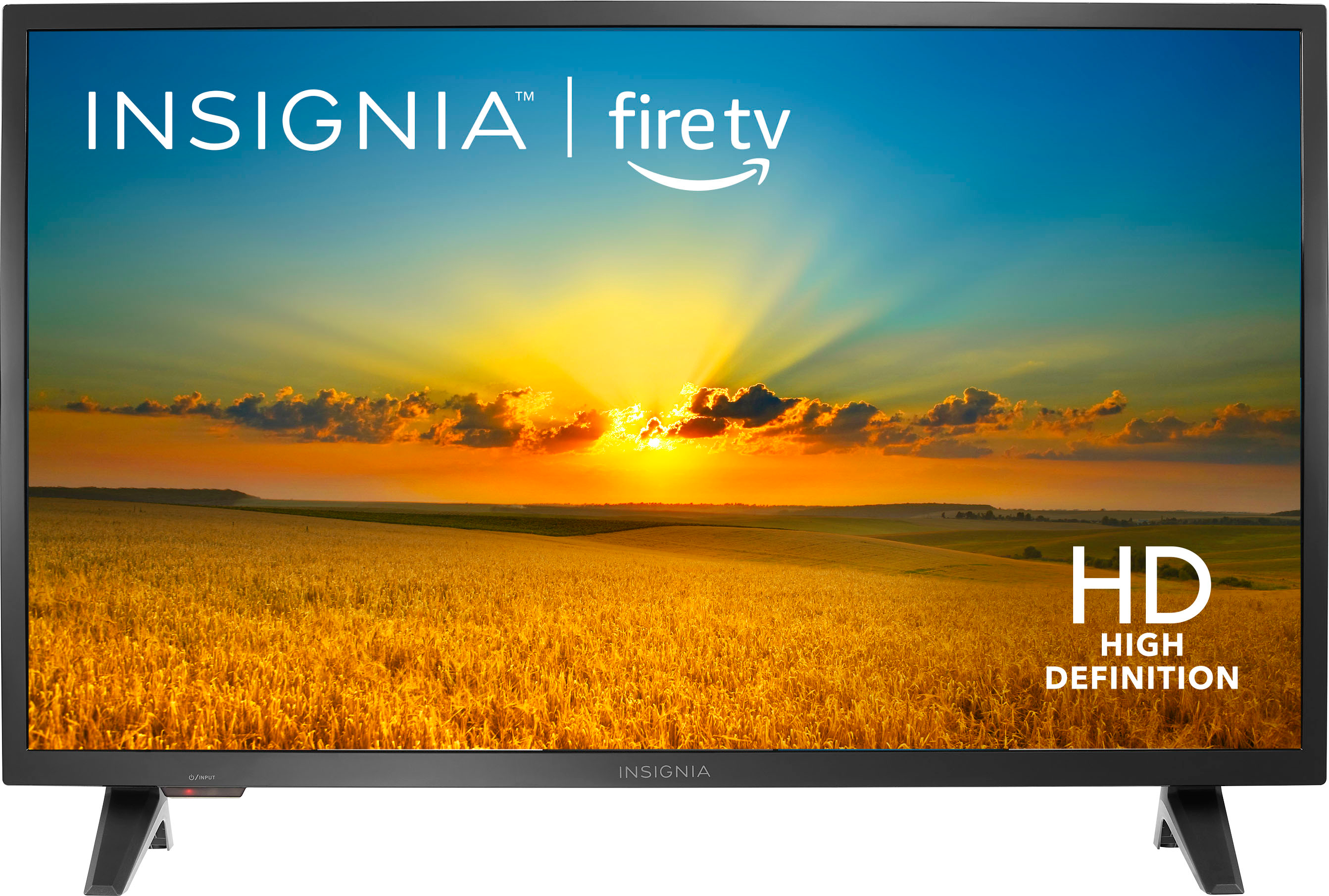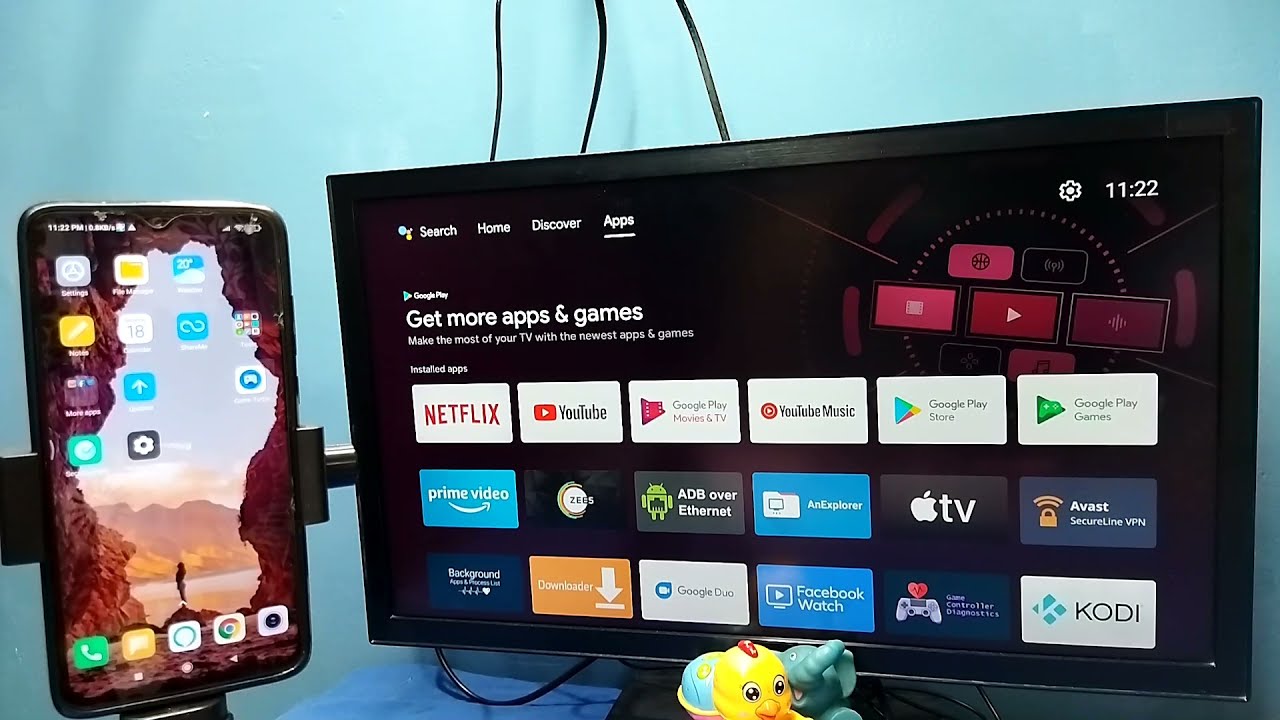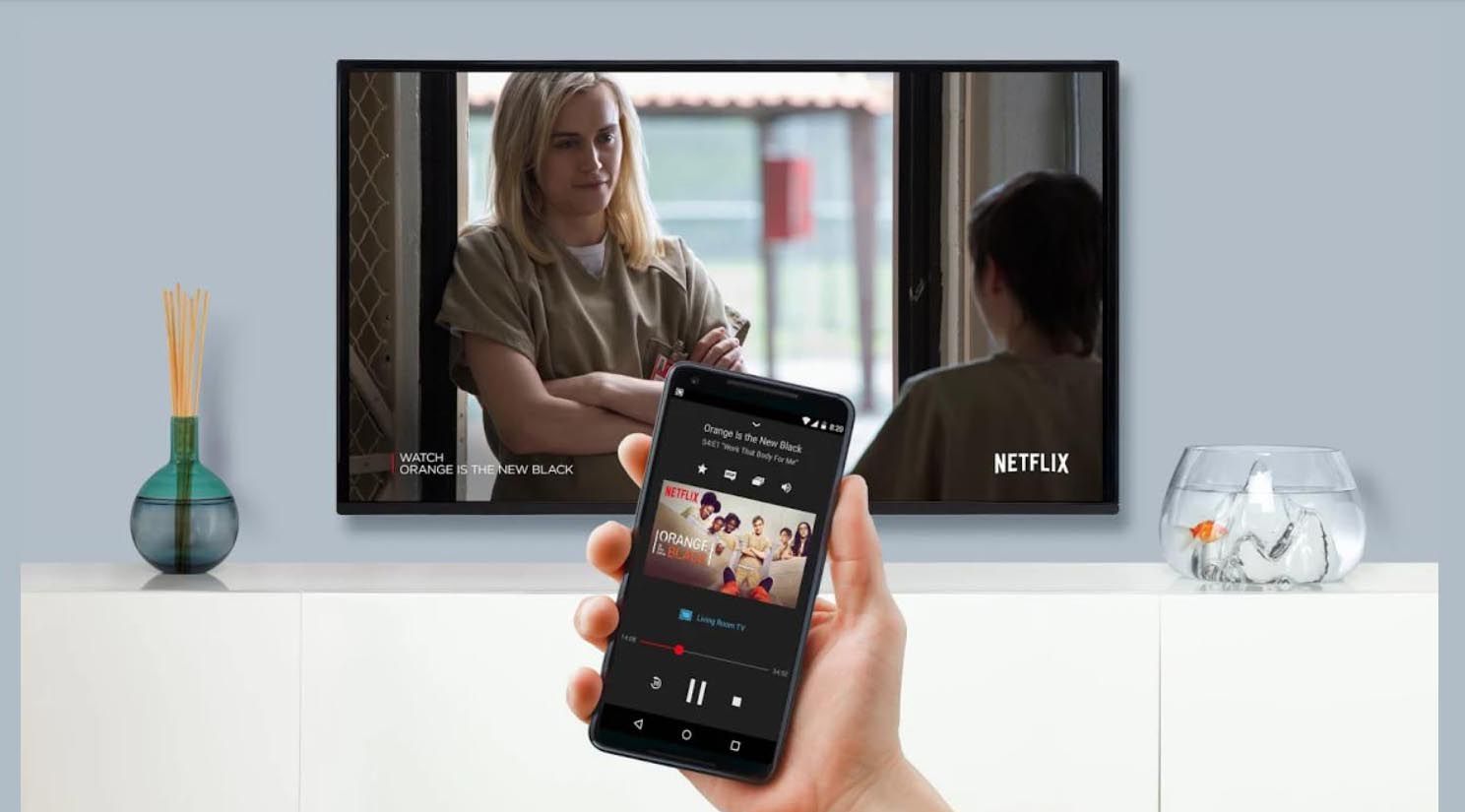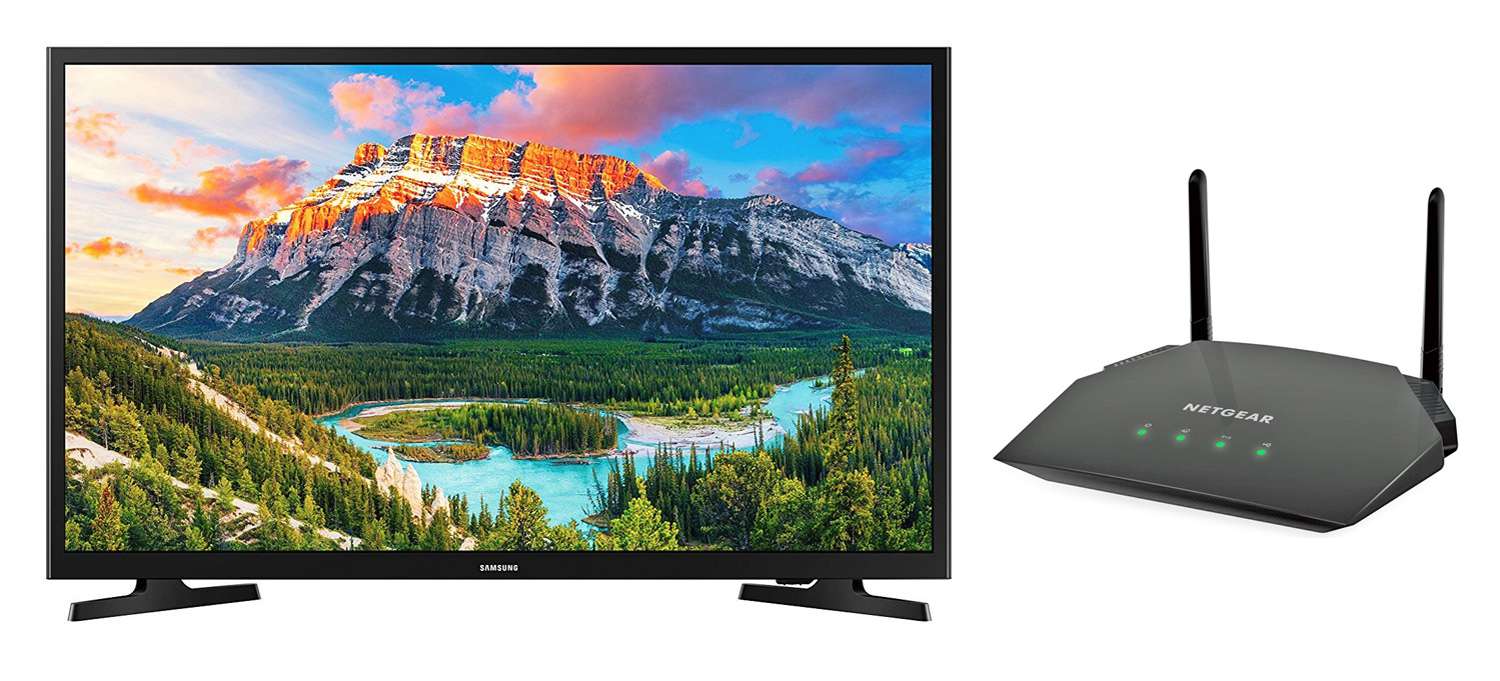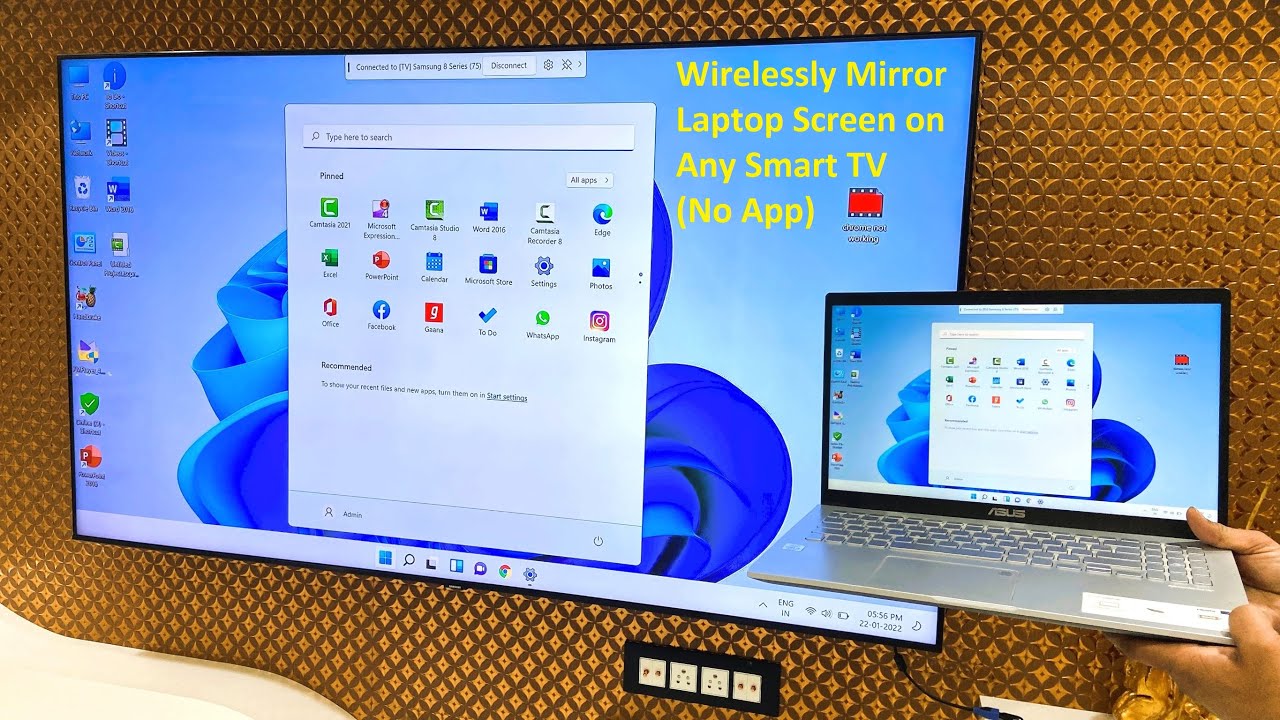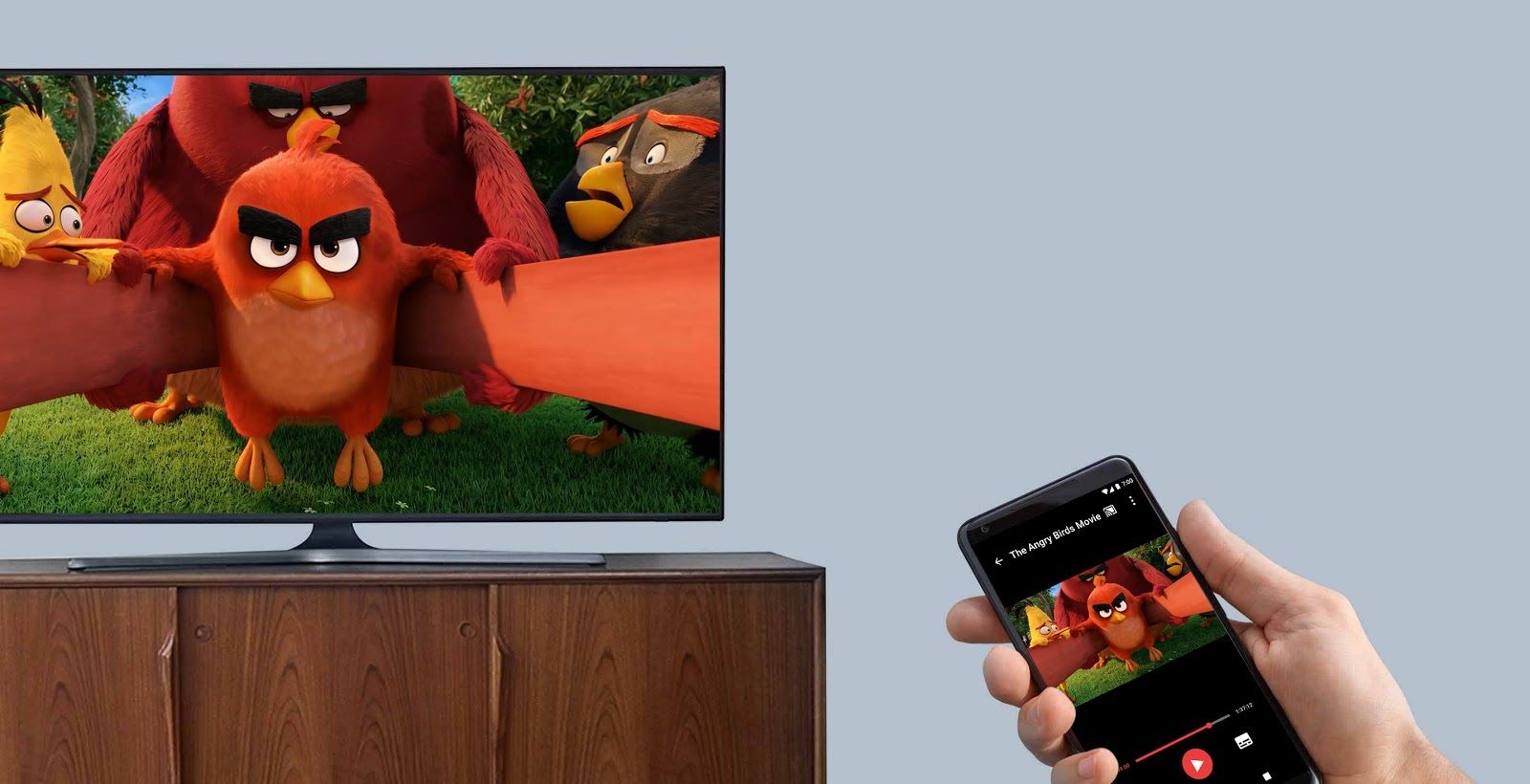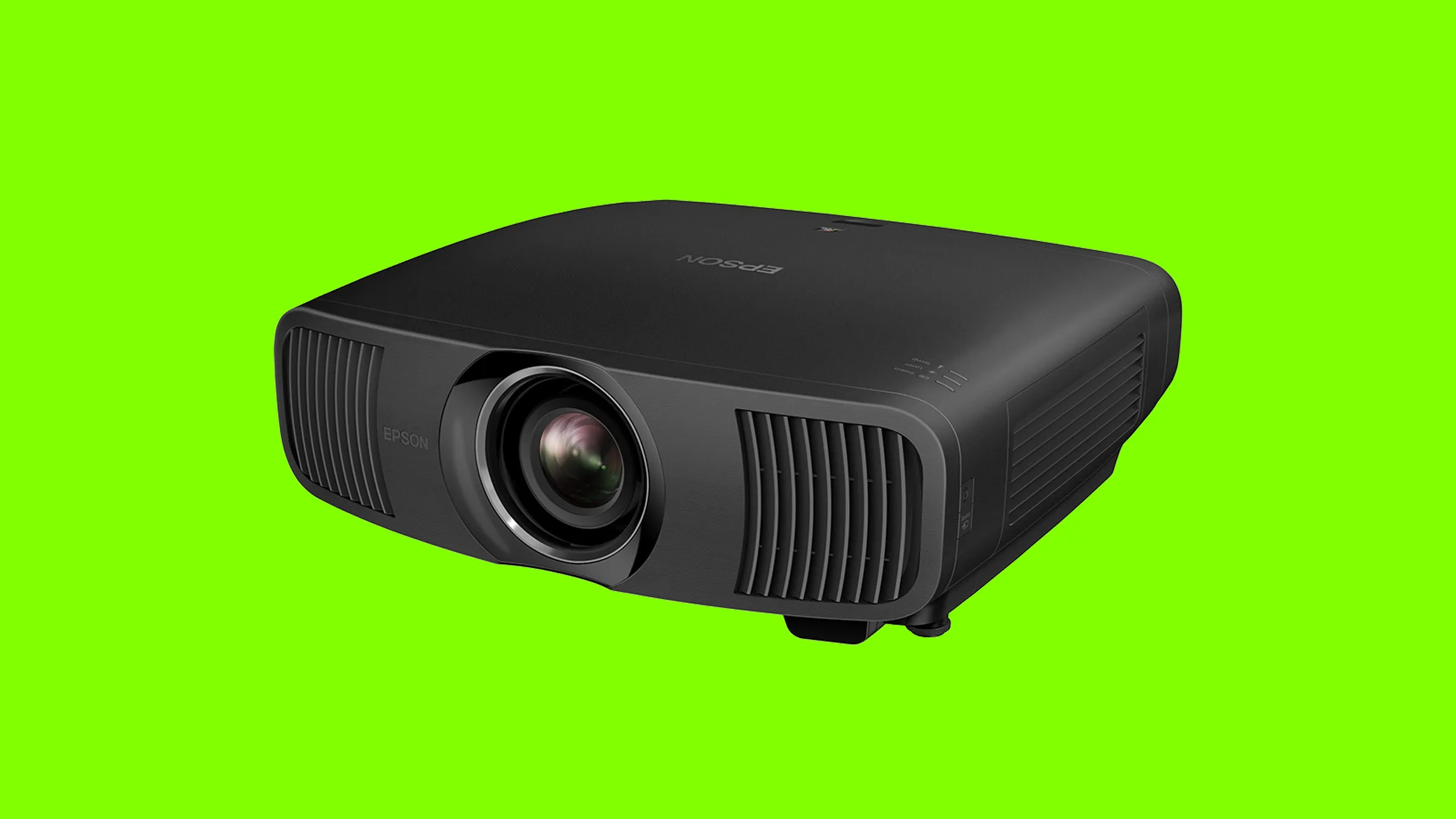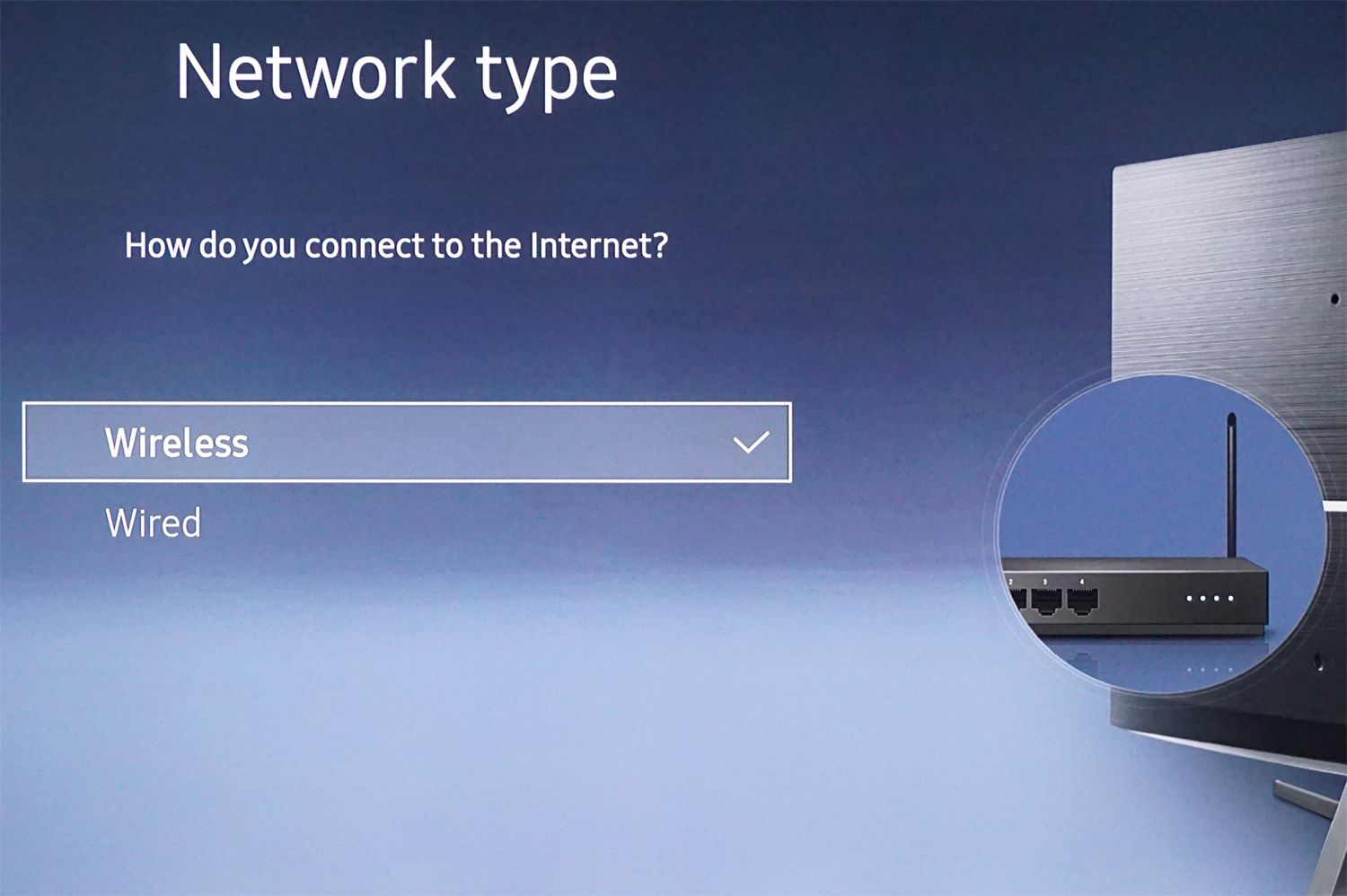Introduction
Welcome to the world of smart technology where advancements in televisions have revolutionized our viewing experience. With features like built-in Wi-Fi and smart TV capabilities, watching our favorite shows and movies has become more convenient and enjoyable. But what exactly are built-in Wi-Fi and smart TV, and what sets them apart?
Built-in Wi-Fi refers to the ability of a TV to connect to the internet wirelessly without the need for any external devices. It allows users to access online content such as streaming services, social media platforms, and online gaming directly from their television sets.
On the other hand, smart TV refers to a television that incorporates advanced computing and internet connectivity features. It offers a variety of applications and functionalities, similar to those found on smartphones and tablets. These features enable users to browse the web, stream content, play games, and even control their smart home devices – all from the convenience of their TV screen.
In this article, we will explore the differences between built-in Wi-Fi and smart TV, the unique features they offer, their benefits, and their limitations. By understanding these distinctions, you will be better equipped to make an informed decision when purchasing a new television.
Definition of Built-in Wi-Fi
Built-in Wi-Fi is a feature found in modern televisions that allows them to connect to the internet wirelessly without the need for any additional devices. It eliminates the hassle of connecting external cables or adapters, providing a seamless and convenient internet experience directly through the TV.
With built-in Wi-Fi, users can access a wide range of online content and services without the need for a separate internet-enabled device, such as a streaming box or dongle. This includes popular streaming platforms like Netflix, Hulu, and Amazon Prime Video, as well as social media applications and online gaming platforms. Built-in Wi-Fi also offers the ability to browse the web, access online news and weather updates, and even download and install apps directly onto the television.
This feature relies on the Wi-Fi capabilities of the TV, which means it must be connected to a Wi-Fi network in order to access the internet. This can be done by selecting the desired Wi-Fi network from the TV’s settings menu and entering the network password if required. Once connected, the TV can then access the internet just like any other Wi-Fi-enabled device, providing endless entertainment and information options.
It’s important to note that the quality and speed of the Wi-Fi connection can impact the performance and streaming capabilities of the built-in Wi-Fi feature. If the Wi-Fi signal is weak or the internet speed is slow, it may result in buffering issues or lower video quality when streaming content.
In summary, built-in Wi-Fi simplifies the process of connecting a television to the internet by eliminating the need for additional devices. It provides access to a wide range of online content, making it easier than ever to enjoy your favorite shows, movies, and online services without the hassle of cables or adapters.
Definition of Smart TV
A smart TV is a television that combines traditional television capabilities with advanced computing and internet connectivity features. It offers a wide array of interactive and multimedia functionalities, making it more than just a device for watching TV shows and movies.
Unlike traditional televisions, smart TVs are equipped with an operating system that allows users to access a variety of applications directly from their TV screens. These applications, commonly referred to as “apps,” provide access to online streaming platforms, web browsers, social media networks, gaming platforms, and even smart home integration.
One of the key features of a smart TV is its ability to connect to the internet, either via built-in Wi-Fi or through an Ethernet cable. This enables users to stream their favorite content from popular platforms like Netflix, Hulu, and YouTube, as well as access a wealth of other online services and websites.
Smart TVs also commonly support screen mirroring, allowing users to display the content from their smartphones, tablets, or computers directly on the TV. This feature is particularly useful for sharing photos and videos with friends and family, as well as for participating in video conferences or presentations.
In addition to streaming and screen mirroring capabilities, smart TVs often come with voice control systems, such as Amazon Alexa or Google Assistant. These voice assistants allow users to control the TV functions, search for content, adjust settings, and even control other smart devices in their home, all by using voice commands.
Another notable feature of smart TVs is the ability to install additional applications and services. These can range from entertainment apps to productivity tools, providing users with a personalized and versatile entertainment experience.
In summary, a smart TV combines traditional television features with advanced computing and internet capabilities. Its ability to access a wide range of applications, stream content, support screen mirroring, and integrate with smart home devices make it a versatile and convenient entertainment hub for today’s connected world.
Features of Built-in Wi-Fi
Built-in Wi-Fi in televisions offers a host of features that enhance the viewing experience and connectivity options for users. These features provide convenience, ease of use, and access to a broad range of online content. Let’s explore some of the key features of built-in Wi-Fi:
1. Seamless Wireless Connectivity: Built-in Wi-Fi eliminates the need for additional cables or adapters to connect your TV to the internet. It provides a seamless wireless connection, giving you the freedom to place your TV anywhere within the range of your Wi-Fi network.
2. Online Streaming: With built-in Wi-Fi, you can access popular streaming platforms like Netflix, Hulu, Amazon Prime Video, and many others directly from your TV. You can easily stream your favorite movies, TV shows, and original content in high definition or even 4K resolution if supported by your TV.
3. App Installation: Built-in Wi-Fi allows you to download and install various applications directly onto your TV. These apps can include social media platforms, gaming apps, news apps, and even productivity tools. You can personalize your TV experience by choosing and installing the apps that cater to your interests and preferences.
4. Web Browsing: With built-in Wi-Fi, you can access the internet and browse your favorite websites directly from your TV. Whether you want to check the latest news, shop online, or browse social media, built-in Wi-Fi enables you to do so without the need for an additional device.
5. Firmware Updates: Built-in Wi-Fi makes it easy for your TV to receive firmware updates. These updates ensure that your TV’s operating system and apps are up to date, providing bug fixes, security patches, and new features. Keeping your TV’s software updated ensures optimal performance and compatibility.
6. Multi-device Connectivity: Built-in Wi-Fi allows you to connect multiple devices to your TV simultaneously. You can share photos, videos, and other media from your smartphones, tablets, and computers directly on the TV screen. This feature enables easy sharing and collaboration with friends and family.
In summary, built-in Wi-Fi offers seamless wireless connectivity, online streaming capabilities, app installation, web browsing, firmware updates, and multi-device connectivity. These features enhance your TV viewing experience by providing easy access to a wide range of online content and expanding the functionality of your television.
Benefits of Built-in Wi-Fi
The inclusion of built-in Wi-Fi in televisions brings several benefits to users, enhancing their entertainment experience and providing convenience in accessing online content. Let’s explore some of the key benefits of having built-in Wi-Fi:
1. Easy Setup and Convenience: Built-in Wi-Fi eliminates the need for additional cables or adapters, making it incredibly easy to set up and connect your television to the internet. This convenience saves you time and effort, allowing you to start enjoying online content without any hassle.
2. Access to Online Streaming Platforms: With built-in Wi-Fi, you have direct access to popular streaming platforms such as Netflix, Hulu, Amazon Prime Video, and more. This means you can easily stream a vast library of movies, TV shows, and original content in high-quality resolution, transforming your TV into an entertainment powerhouse.
3. Wide Range of Content: Built-in Wi-Fi opens the doors to a wide variety of online content beyond traditional broadcast television. You can explore different genres, discover new shows and movies, and indulge in binge-watching marathons from various streaming platforms, expanding your entertainment options.
4. App Customization: Having built-in Wi-Fi allows you to download and install applications directly onto your TV. This gives you the ability to customize your viewing experience by accessing social media, gaming apps, news apps, and more, all directly from your television screen.
5. Enhanced Web Browsing: Built-in Wi-Fi enables you to browse the internet directly from your TV, providing a larger screen and a more comfortable viewing experience. You can easily access websites, search for information, shop online, and stay updated with the latest news without the need for a separate device.
6. Firmware Updates and Future Compatibility: Televisions with built-in Wi-Fi often receive regular firmware updates. These updates ensure that your TV’s operating system and applications stay up to date, improving performance, introducing new features, and addressing any security vulnerabilities. It also ensures that your TV remains compatible with evolving technologies and streaming services.
7. Multi-device Connectivity: Built-in Wi-Fi allows you to connect multiple devices, such as smartphones, tablets, or laptops, to your TV. This capability enables easy sharing of photos, videos, and other media, creating a seamless multimedia experience for you and your family.
Overall, built-in Wi-Fi offers easy setup, access to a wide range of online streaming platforms, app customization, enhanced web browsing, firmware updates, and multi-device connectivity. These benefits enhance your entertainment options, provide convenience, and ensure your TV stays up to date with the latest features and technology.
Limitations of Built-in Wi-Fi
While built-in Wi-Fi offers numerous benefits, it also has some limitations that users should be aware of. Understanding these limitations can help manage expectations and make informed decisions about using the built-in Wi-Fi feature. Let’s explore some of the key limitations:
1. Limited Range: The Wi-Fi signal strength depends on the distance between the television and the Wi-Fi router. If the TV is far away from the router or obstructed by walls, the signal may weaken, leading to poor connectivity or slower internet speeds. This limitation can impact streaming quality and the overall performance of online applications.
2. Interference: Built-in Wi-Fi can be susceptible to interference from other electronic devices or nearby Wi-Fi networks operating on the same or similar channels. This interference may cause connection drops, slower speeds, or interruptions in streaming content. In congested areas with numerous Wi-Fi networks, this limitation can be more prominent.
3. Limited Processing Power: Smart TVs with built-in Wi-Fi may have limited processing power compared to dedicated streaming devices or gaming consoles. This limitation can result in slower loading times, occasional lag, or a less responsive user interface when navigating through applications or browsing the internet.
4. Dependency on App Availability: The availability of apps on a smart TV with built-in Wi-Fi may vary. While the most popular streaming services and applications are usually available, some niche or regional services may not be offered. Additionally, not all smart TVs continuously update their compatible app libraries, which may limit access to new or updated applications.
5. Security Concerns: Connecting a smart TV to the internet means it is susceptible to potential security threats, just like any other internet-connected device. Keeping the TV’s firmware updated and implementing security measures, such as using strong passwords and keeping antivirus software up to date, can help mitigate these risks.
6. Limited Upgradeability: Unlike external streaming devices or gaming consoles, built-in Wi-Fi is not easily upgradeable. As new technologies and standards emerge, the hardware limitations of the TV may prevent it from supporting future advancements in connectivity. This can result in reduced compatibility with newer streaming platforms or services.
7. Dependency on Internet Connection: Built-in Wi-Fi relies on a stable and robust internet connection for optimal performance. If the internet service provider experiences outages or if the connection itself is unstable, it can impact streaming quality, cause buffering, or hinder web browsing capabilities.
Despite these limitations, built-in Wi-Fi remains a convenient and valuable feature for accessing online content directly from your TV. Being aware of these limitations can help you manage your expectations and optimize your viewing experience.
Features of Smart TV
Smart TVs offer a wide range of features that go beyond traditional television viewing. These features provide users with an enhanced entertainment experience and the ability to customize their TV usage. Let’s explore some of the key features of smart TVs:
1. Internet Connectivity: Smart TVs are equipped with built-in Wi-Fi or Ethernet connectivity, allowing them to connect to the internet. This feature enables users to access a variety of online content and streaming services without the need for additional devices.
2. App Store: Smart TVs have their own app stores, similar to those found on smartphones and tablets. These app stores feature a wide range of applications that can be downloaded and installed directly onto the TV. Users can browse, download, and update apps to enhance their TV viewing experience.
3. Streaming Services: Smart TVs provide direct access to popular streaming services such as Netflix, Hulu, Amazon Prime Video, and more. Users can stream their favorite TV shows, movies, and original content from these platforms, often in high definition or even 4K resolution, depending on the TV’s capabilities.
4. Web Browsing: Smart TVs offer web browsing capabilities, allowing users to surf the internet directly from their TV screen. This feature provides the convenience of accessing websites, searching for information, and staying connected with social media platforms, all from the comfort of the living room.
5. Voice Control: Many smart TVs come equipped with voice control capabilities. Users can operate their TV and navigate through menus, search for content, and control certain functions using voice commands. Voice control eliminates the need for manual input and enhances the overall user experience.
6. Screen Mirroring: Smart TVs support screen mirroring, enabling users to display the content from their smartphones, tablets, or computers on the TV screen. This feature allows for easy sharing of photos, videos, presentations, and even mobile games, providing a larger display and a more immersive viewing experience.
7. Smart Home Integration: Many smart TVs integrate with smart home devices, allowing users to control their connected devices through the TV. Users can dim lights, adjust thermostats, and control other smart home devices, all from the convenience of their TV remote or voice commands.
In summary, smart TVs offer a range of features including internet connectivity, access to app stores, streaming services, web browsing, voice control, screen mirroring, and smart home integration. These features enhance the overall entertainment experience and provide users with customization options to tailor their TV usage to their preferences.
Benefits of Smart TV
Smart TVs offer a plethora of benefits that enhance the viewing experience and provide users with a wide range of entertainment options. These benefits make smart TVs a popular choice for modern households. Let’s explore some of the key advantages of owning a smart TV:
1. Convenient Access to Online Content: One of the primary benefits of smart TVs is the easy access to online content. With built-in Wi-Fi or Ethernet connectivity, users can stream movies, TV shows, and videos from popular platforms like Netflix, Hulu, and YouTube directly on their TV screens. This eliminates the need for additional devices and ensures an effortless entertainment experience.
2. Versatile App Store: Smart TVs come equipped with an app store that offers a wide variety of applications for download. Users can enhance their TV experience by installing apps for social media, gaming, news, weather, and more. The versatility of the app store means users can customize their smart TV to suit their unique preferences and interests.
3. Web Browsing on a Larger Screen: Smart TVs allow users to browse the internet directly from their TV screens. This means users can access websites, search for information, and even shop online, all from the comfort of their living room. The larger screen of a smart TV provides a more immersive web browsing experience compared to smaller devices like smartphones or tablets.
4. Seamless Screen Mirroring: Smart TVs support screen mirroring, enabling users to display the content from their smartphones, tablets, or computers directly on the TV screen. This feature is ideal for sharing photos, videos, presentations, or playing mobile games on a larger, more immersive display.
5. Voice Control Convenience: Many smart TVs come equipped with voice control capabilities, allowing users to operate their TVs through voice commands. This convenience eliminates the need to type or navigate through menus manually. Users can easily change channels, search for content, and control other functions using voice commands, providing a more interactive and intuitive TV experience.
6. Integration with Smart Home Devices: Smart TVs often integrate with other smart home devices, creating a seamless and interconnected ecosystem. Users can control their smart lights, thermostats, security cameras, and other compatible devices directly from their TV. This integration enhances the overall home automation experience and simplifies device management.
7. Regular Firmware Updates: Smart TV manufacturers regularly release firmware updates, introducing new features, improving performance, and addressing any security vulnerabilities. These updates ensure that users can enjoy the latest functionalities and stay up to date with evolving technology.
In summary, smart TVs offer convenient access to online content, a versatile app store, web browsing on a larger screen, seamless screen mirroring, voice control convenience, integration with smart home devices, and regular firmware updates. These benefits enhance the entertainment experience, provide customization options, and keep users connected with the ever-changing digital landscape.
Limitations of Smart TV
While smart TVs offer numerous benefits, it’s important to be aware of their limitations. Understanding these limitations can help users manage their expectations and make informed decisions when choosing a smart TV. Let’s explore some of the key limitations of smart TVs:
1. Learning Curve: Smart TVs often come with complex user interfaces and a wide array of features. Learning to navigate and utilize all the functionalities of a smart TV may require some time and effort. Users may need to familiarize themselves with the various menus, settings, and controls to make the most out of their smart TV experience.
2. Dependent on Internet Connectivity: Smart TVs heavily rely on a stable internet connection for most of their features to function properly. If the internet connection is slow or unstable, it can affect streaming quality, app responsiveness, and overall performance. Additionally, if the internet goes down, some functionalities of the smart TV may become temporarily unavailable.
3. App Compatibility and Availability: While smart TVs offer access to app stores, not all apps may be available or compatible with a specific smart TV platform. Some apps or streaming services may be exclusive to certain brands or operating systems, limiting the content options for users. App availability can vary across regions as well.
4. Limited App Updates and Support: Smart TV manufacturers may not provide regular updates for all their apps, which can lead to compatibility issues or missing features. Some apps may also become outdated or discontinued over time, limiting the functionality and utility of certain apps on a smart TV.
5. Security Risks: Smart TVs, like any other internet-connected device, can be vulnerable to security threats. As they become more integrated with the internet and connected devices, the risk of unauthorized access or privacy breaches increases. It’s important to implement strong passwords, keep the TV’s firmware up to date, and take necessary precautions to protect personal information.
6. Hardware Limitations: The hardware capabilities of smart TVs may vary depending on the model or brand. Some smart TVs may have limited processing power, which can result in slower performance, longer load times, or laggy navigation. This limitation can become more noticeable when running resource-intensive apps or streaming content in high resolutions.
7. Lack of Future Compatibility: Smart TVs may face compatibility issues with newer technologies or standards as they evolve over time. As newer streaming services or features emerge, older smart TVs may not support them, limiting the ability to access certain content or enjoy the latest functionalities offered by the industry.
Understanding these limitations can help users set realistic expectations and choose a smart TV that meets their specific needs. Despite these limitations, the convenience, versatility, and extensive range of features offered by smart TVs still make them a popular choice for consumers.
Comparison between Built-in Wi-Fi and Smart TV
Built-in Wi-Fi and smart TV are two distinct features that can enhance the TV viewing experience and provide access to a wide range of online content. While both features offer internet connectivity, there are some key differences between them. Let’s compare built-in Wi-Fi and smart TV to understand their unique characteristics:
1. Functionality: Built-in Wi-Fi is a feature that allows a TV to connect to the internet wirelessly, providing access to online content and streaming services. On the other hand, a smart TV encompasses more than just internet connectivity. It incorporates an operating system, apps, and various functionalities, making it a fully integrated multimedia device with advanced computing capabilities.
2. Internet Access: Built-in Wi-Fi enables a TV to connect to the internet without the need for external devices, using the TV’s own Wi-Fi capabilities. This allows users to stream content, browse the web, and access online services directly on their TV. In contrast, smart TVs offer internet connectivity as well, but they go beyond basic online access by providing a variety of applications, customizable interfaces, and additional features like voice control and screen mirroring.
3. App Availability: Built-in Wi-Fi primarily focuses on connecting a TV to online content and streaming services. While some TVs with built-in Wi-Fi have limited app stores, these may not offer the same variety and range of applications as smart TVs. Smart TVs come with dedicated app stores that provide access to a wide selection of apps, allowing users to personalize their TV experience by installing apps for gaming, social media, productivity, and more.
4. User Interface: Built-in Wi-Fi generally relies on the TV’s standard user interface to access online content. It may require using pre-installed apps or navigating through menus to find specific streaming services. In contrast, smart TVs have a more intuitive and user-friendly interface designed to optimize the use of apps and online features. They often include features like recommendations, personalized content suggestions, and seamless integration between apps and traditional TV functions.
5. Customizability: Built-in Wi-Fi provides access to a range of online content but may lack customization options. Smart TVs, on the other hand, allow users to personalize their experience by downloading and installing apps, rearranging the app interface, and customizing settings according to their preferences. This level of customization offers users greater control over their TV usage and tailoring the device to their specific needs.
6. Complexity and Learning Curve: Built-in Wi-Fi is generally simpler to set up and use compared to a smart TV. Smart TVs, with their advanced features and wide range of functionalities, may have a steeper learning curve. Users may need to familiarize themselves with the various settings, app installation, and customization options to fully utilize the capabilities of a smart TV.
In summary, built-in Wi-Fi provides wireless internet connectivity and access to online content, while smart TVs offer a more advanced and integrated user experience. Smart TVs provide app stores, customizable interfaces, and additional features, making them a more versatile and interactive option for users who want a fully integrated multimedia device.
Conclusion
As technology continues to advance, the inclusion of built-in Wi-Fi and smart TV capabilities has transformed the way we engage with television content. Both features offer unique benefits and functionalities that enhance the viewing experience and provide access to a wealth of online content.
Built-in Wi-Fi simplifies the process of connecting a television to the internet, eliminating the need for external devices and cables. It allows users to access online streaming services, browse the web, and enjoy a wide range of entertainment options directly from the TV. Built-in Wi-Fi offers convenience, easy setup, and the ability to access online content without any additional equipment.
On the other hand, smart TVs provide a more comprehensive multimedia experience. In addition to built-in Wi-Fi, they offer app stores, personalized interfaces, voice control, and screen mirroring capabilities. Smart TVs integrate different applications into a single device, allowing users to access a variety of content, stream their favorite movies and shows, and even control smart home devices – all from the convenience of their TV screens. Smart TVs provide versatility, customization, and a more engaging user experience.
While both built-in Wi-Fi and smart TV have their advantages, they also come with limitations. Built-in Wi-Fi may have a limited range, potential interference, and dependency on app availability and updates. Smart TVs may require a learning curve, depend on internet connectivity, and face potential compatibility issues. Understanding these limitations can help users manage their expectations and maximize the benefits of their chosen technology.
In conclusion, the choice between built-in Wi-Fi and smart TV ultimately comes down to personal preference and specific needs. If you’re primarily interested in accessing online streaming services and basic internet browsing, a TV with built-in Wi-Fi may suffice. On the other hand, if you desire a more immersive multimedia experience, app customization, and advanced features, a smart TV may be the ideal choice.
Regardless of the option you choose, both built-in Wi-Fi and smart TV enhance your home entertainment experience, providing you with a broader range of content, convenience, and seamless connectivity to the digital world.







